Will NZ Housing Prices Drop Like Aussie Property?
Market and Economic Update – Week Ended 3rd May 2019

Peter Flannery CFP AFA
“If you have one economist on your team,
it’s likely that you have one more than you’ll need.”
Warren Buffett
The Markets
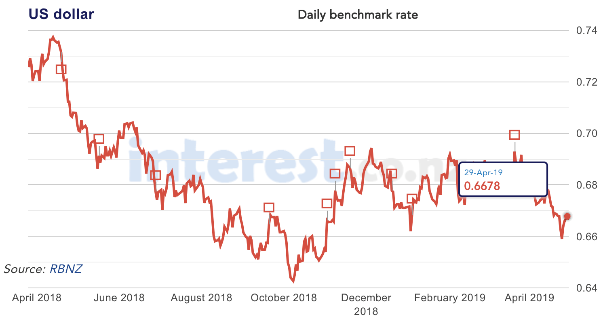
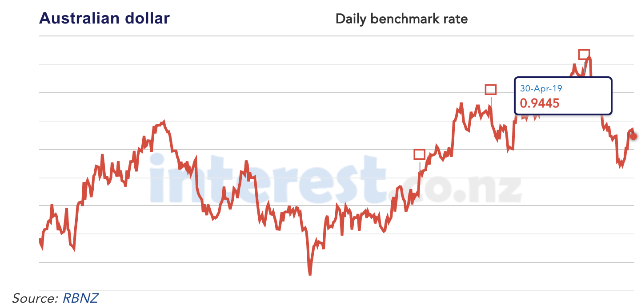
The above charts show the NZ currency cross rates for Australian dollars and US dollars.
The New Zealand dollar has declined a bit compared to both the Australian and US dollars. Although currencies can have a real impact on returns in the short term, over time the currency tends to flatten out and be reasonably neutral variable with regards to our investment portfolios. Also, global markets do not see much difference between Labour and National here in New Zealand so either way the markets do not mind when there is a change in government.
ECONOMIC UPDATE
US Interest rates (Fed funds rate)
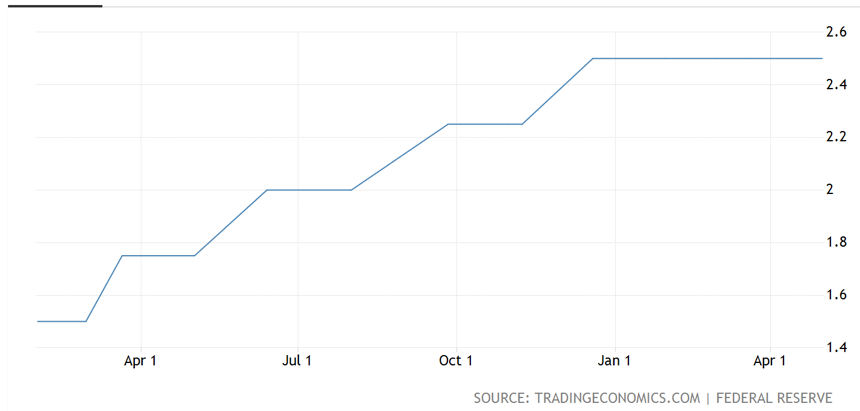
The above chart shows how US Federal Reserve rate has been tracking over the last couple of years.
The US Fed kept rates on hold. The recent decision was unanimous, and “they remain patient whilst working through competing economic signals” along with pressure from Donald Trump for a rate cut. Is it not funny how people with different agendas want different things! The US Federal Reserve are looking to maintain economic stability. Donald Trump likely wants things to look good in the economy so that he can claim the credit.
I was interested to note sluggish car sales in the US with Fiat Chrysler US deliveries down more than 6% (in Canada they fell 10%), Ford down nearly 5% and Toyota down 4.4%. There has been some suggestion that higher interest rates on car loans are one factor starting to impact. Car buyers are now paying 6% on average to borrow money (roughly 2 – 3% lower than what the average car loan in New Zealand seems to be).
The American economy, by some estimates, grew 3.2% annualised rate in the first quarter of 2019 which looks good, though likely somewhat of an anomaly given the decline in US factory activity and construction spending over March.
Some European economies appear to be doing slightly better than expected over the first quarter of 2019. Economic growth in the Euro zone was 0.4% for the quarter. Although economic growth in Europe is still sluggish, the first quarter of 2019 is a slight improvement fuelled by rising wages, lower unemployment and slightly stronger consumer demand.
Meanwhile China’s economy also topped expectations in the first quarter of 2019, with growth coming in at 6.4%.
Australia
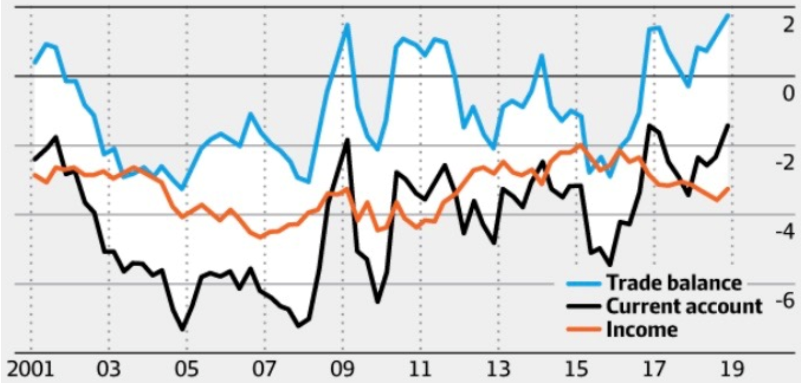
Source: JPMorgan: the above chart shows Australia’s current account and trade balance.
Australia’s international debt and trading position improves. Australia has a significant superannuation investment industry (New Zealand is really only just getting started by comparison). The foreign income from these offshore investments is starting to become meaningful and is important in terms of balancing the risk from being a net commodity exporter.
Australian Housing – Finance and Prices
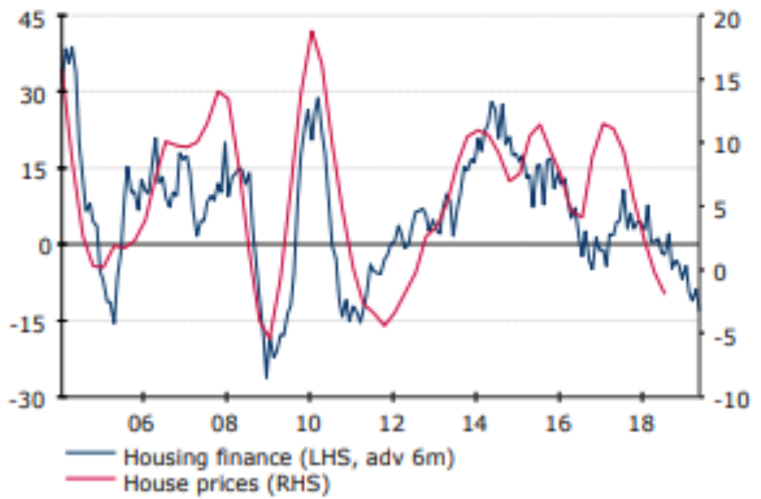
The above chart shows a decline in house prices and a corresponding decline in mortgage lending against residential property in Australia.
House prices continue to decline in Australia. Residential property prices do not go up forever. The housing price correction is well underway in Australia with some recent property owners and investors experiencing negative equity. In other words, if they were to sell the property they have bought recently, there would not be enough money to pay all of the mortgage back. They would still be left with debt if they were to sell and no house. Of course, if they do not need to sell then they would certainly not do so and in the fullness of time the price decline will slow down and stop, and longer term prices may even recover.
Australia – Official Cash Rate
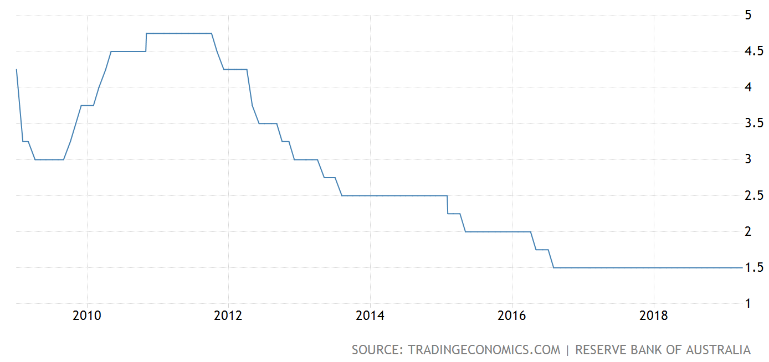
The official cash rate in Australia remains on hold.
The official cash rate in Australia has remained on hold since 2016. The question is, will the next move be a rate cut? We will know very soon.
New Zealand
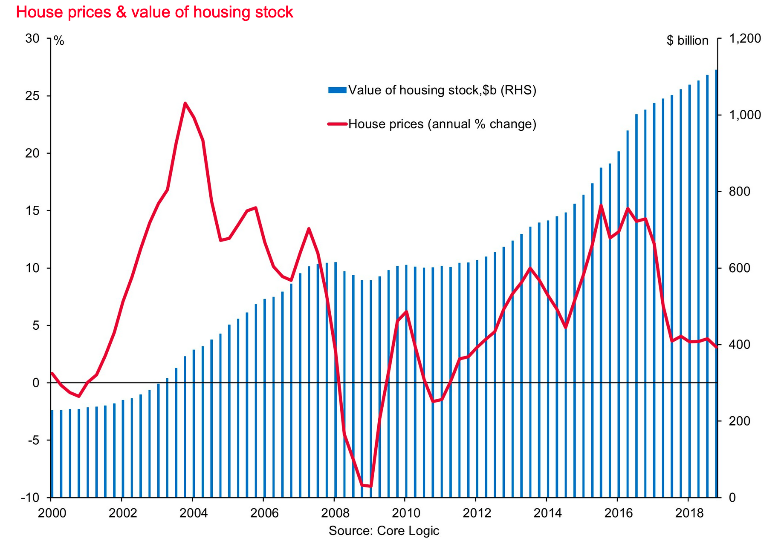
The above chart shows the total value of housing stock in New Zealand (the right side axis) and the movement in house prices (the left hand side axis).
The total value of housing stock in New Zealand continues to grow, however the pace of growth has declined. House prices generally are supported by ongoing immigration and low interest rates. The Brightline legislation introduced a couple of years ago meant that property investors could no longer buy and sell property within five years without being taxed on the capital gain. In other words, the capital gain is now treated as income and assessable for income tax.
That has certainly taken the shine off so-called “property flipping”. Also, there is increasing government regulation for landlords in New Zealand, which I suspect does not worry serious property investors too much but may impact property investors who think that investing in property is nothing more than a transaction.
So far, we have not seen a serious decline in trading prices like they have seen in Australia and although it is difficult to know for sure, at this stage a similar pricing decline seems unlikely. I would not rule it out though.
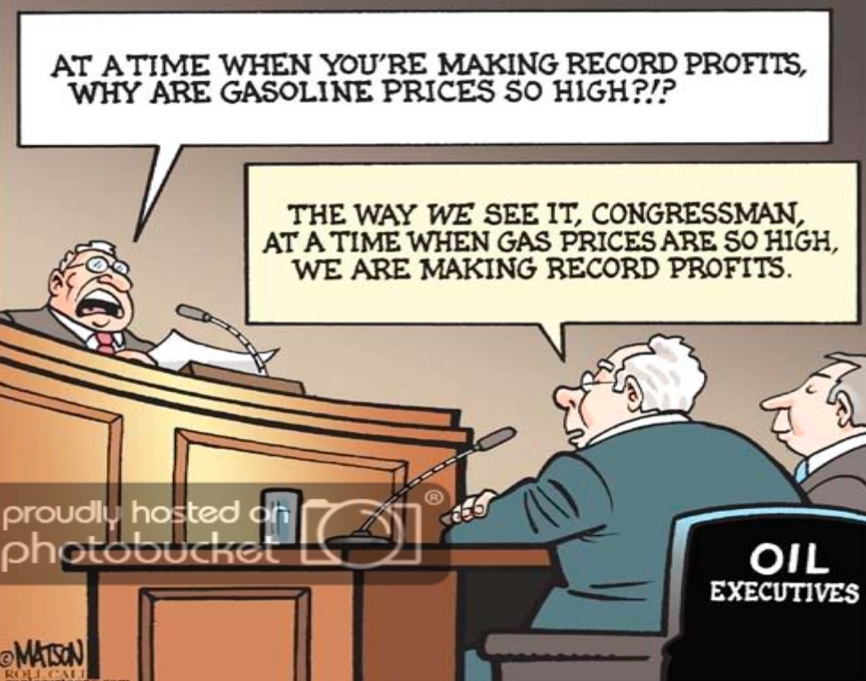
STOP PRESS: The update this week is slightly more brief than usual due to the editor being in Omaha.
